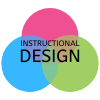“Technology gives us access to more and better content, communication, and assessment, but technology by itself does not create engagement. Traditional lecture courses can be improved by the judicious use of technology, but the primary benefit of technology-mediated content delivery, communication, and assessment outside of class is the additional time it creates for more active and engaged learning with prepared students inside the classroom.”
Bowen, J. 2012. Teaching Naked: How Moving Technology Our of Your College Classroom will Improve Student Learning, Jossey-Bass
Active Learning Spaces: Bridgewater College updated three spaces over the Summer of 2015 to create three active learning spaces; McKinney 126, Bowman 24, and Flory 313. Active learning spaces are spaces or classrooms where students are actively involved in the learning process through a variety of student engagement activities. These spaces are easily transformed into large groups for discussions, small groups for collaborative work, or a traditional classrooms setting for independent work.
- Harvard University: Active Learning
- Educause: Learning Spaces
- University of Michigan: Active Learning
- Steelcase White Paper: How Classroom Design Affects Student Engagement
Blended Learning: Blended learning is “generally applied to the practice of using both online and in-person learning experiences when teaching students.” (The Glossary of Education Reform)
- Vanderbilt University: Blended and Online Learning Design Fellows
- Blended Learning Toolkit
- The eLearning Coach: Best Practices in Blended Learning
Flipped Classrooms: “Flipped learning is a pedagogical approach in which direct instruction moves from the group learning space to the individual learning space, and the resulting group space is transformed into a dynamic, interactive learning environment where the educator guides students as they apply concepts and engage creatively in the subject matter.” (Flipped Learning Network)
